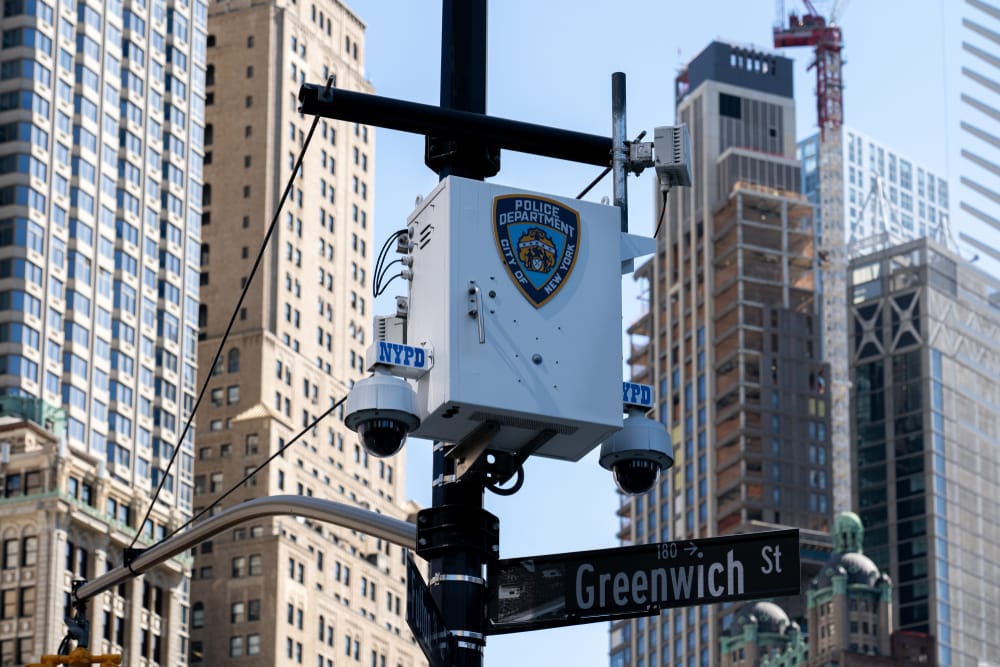The Commoditisation of the Surveillance State
From the ledgers of the British Raj to today’s data centres, the watchtower is now an algorithm. The same idea, only larger, hidden and sharper with AI.

The Theatre of the Technocrisis
Across the world, power is learning to govern through code. Algorithms now enforce what empires once did through armies and networks of spies. In authoritarian regimes this control is overt and obvious. See Wolf Pack AI in Palestine, or Palantir's operations globally and at home. In democracies, these patters of surveillance slide into everyday life unannounced.
Security systems, welfare databases, and predictive tools are all staged as progress towards safer communities, but together they form what Bruce Schneier calls “Security Theatre” – a performance of safety that end up enabling a surveillance state. Cameras, databases, and AI models promise order and protection, while quietly eroding the space for dissent.
This theatre isn’t limited to security; it’s just as visible in how states talk about rights. Aadhaar is a good example. It began as access and entirely voluntary, but very quickly became gatekeeping and obligatory. I had personally put off registering for as long as I could, until even filing taxes became impossible without linking PAN (tax ID) to Aadhaar. Today, Aadhaar sits at the centre of India’s data ecosystem, quietly linking one database after another.
In New York, the police partnered with Microsoft to create a vast surveillance network known as the Domain Awareness System, or DAS, a program so sweeping in scope, it could rival China’s “Skynet” (actual name!). The system draws from more than 18,000 cameras, billions of license plate scans, and tens of millions of police reports, complaints, and 911/311 emergency calls. It is the data backbone of a city watching itself.
Today, that partnership is under fire. The NYPD is being sued for colluding with Microsoft to build and profit from this mass surveillance machine. The lawsuit reveals new details about how far DAS might reach. But more than that, it resurfaces a bigger story, how systems like DAS are creating a new, profit-driven model for state surveillance.
Back in 2012, Mayor Bloomberg even boasted that New York would earn 30% of the profits from every city that bought the system. In fact Microsoft's Blog post about the partnership claims its 30% of revenue. Neither are comforting. What's particularly disturbing, is that it turns the machinery of surveillance into a commodity where state and big tech are both perversely incentivised to promote and proliferate rights-eroding tools.

Details from the lawsuit reveal that the department has also [allegedly] been collecting social media data, quietly expanding the reach of its monitoring. The details now before the courts, claims that this system effectively builds a profile of every New Yorker, whether or not they have a criminal record. In doing so, it argues, the city has crossed a constitutional line, turning everyday life into a warrantless search.
The partnership between Microsoft and the NYPD isn’t surprising. A familiar pattern plays out soon after the launch of DAS. Just a year after the system went live in 2012, Microsoft’s general counsel published a blog post calling for government reforms on surveillance. It announced a new coalition with Meta, Google, Apple, Amazon and others, called Reform Government Surveillance. It claimed to stand for accountability but felt like theatre, a performance to obscure the companies’ own complicity.
From Empire to API
Empires have always been voyeuristic. The Mughals built one of the earliest intelligence networks, rudimentary by today’s standards, but revolutionary for its time. The British Raj scaled it into a policing industry across the Bengal Presidency. And today, Silicon Valley has turned it into “surveillance as a service.”
The construct is consistent even as the tools keep evolving. An entire ecosystem of start-ups and government bodies have perfected the art of watching, and now, Big Tech sells these same instruments of control back to the states that originally invented them.
The Church of Computation
States have always tried to shape how people think. Surveillance and thought control have always gone hand in hand. During the Cold War, both the USSR and the US feared the other had mastered psychological control through the CIA’s MK-ULTRA program and the Soviet “psychotronics” research.
Modern surveillance is more potent than ever. It's data powered and AI accelerated. Governments now depend on private platforms for intelligence, sentiment analysis, and predictive policing. Companies like Palantir, Clearview AI, and Microsoft’s Domain Awareness System blur the line between public and private power.
That’s why a structural separation between State and Big Tech is essential. The same way liberal democracies separated religion from the State, we now need to separate computation from coercion. Without that boundary, technology becomes an unregulated extension of state power.
